Trump hits Asian nations with tariffs, including allies Japan, South Korea
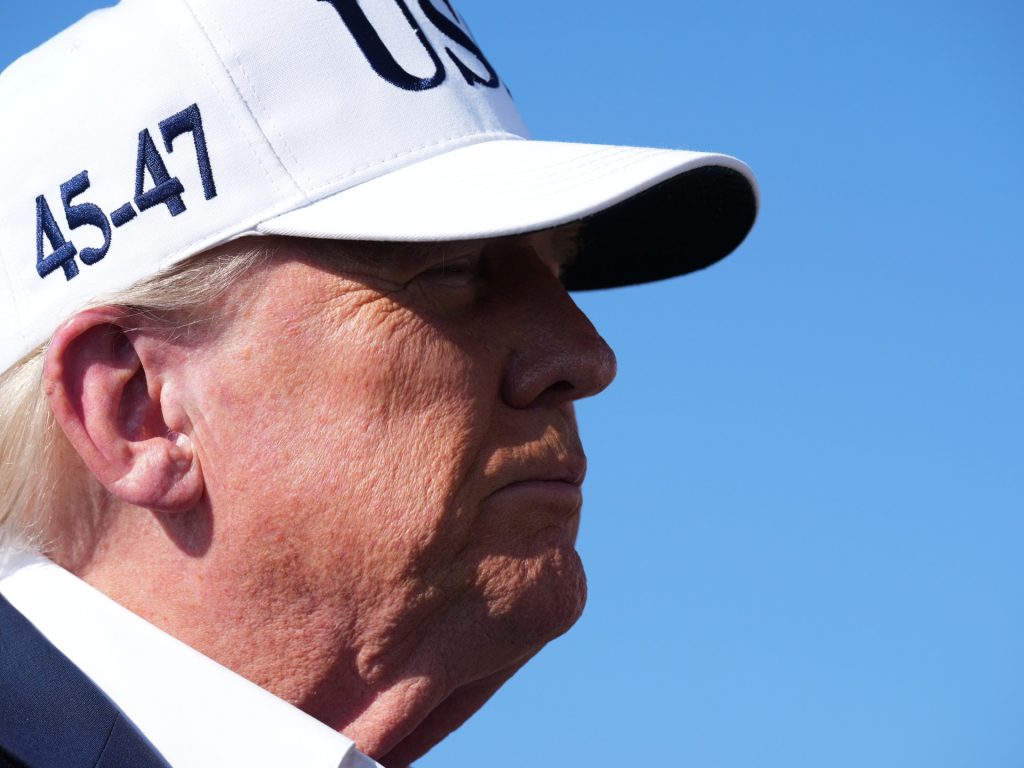
United States President Donald Trump is set to impose 25 percent tariffs on two key US allies, Japan and South Korea, beginning on August 1 as the administration’s self-imposed deadline for trade agreements of July 9 nears without a deal in place. On Monday, the Trump administration said this in the first of 12 letters to key US trade partners regarding the new levies they face. In near-identically worded letters to the Japanese and South Korean leaders, the US president said the trade relationship was “unfortunately, far from Reciprocal”. Japan’s Prime Minister Shigeru Ishiba has said that he “won’t easily compromise” in trade talks with the Trump administration. The US imports nearly twice as much from Japan as it exports to the country, according to US Census Bureau data. Currently, both Japan and South Korea have a 10 percent levy in place, the same as almost all US trading partners. But Trump said he was ready to lower the new levels if the two countries changed their trade policies. “We will, perhaps, consider an adjustment to this letter,” he said in letters to the two Asian countries’ leaders that he posted on his Truth Social platform. “If for any reason you decide to raise your Tariffs, then, whatever the number you choose to raise them by, will be added onto the 25% that we charge.” Trump also announced the US will impose 25 percent tariffs each on Malaysia and Kazakhstan, 30 percent on South Africa and 40 percent each on Laos and Myanmar. US Treasury Secretary Scott Bessent said earlier on Monday that he expected several trade announcements to be made in the next 48 hours, adding that his inbox was full of last-ditch offers from countries to clinch a tariff deal by the deadline. Bessent did not say which countries could get deals and what they might contain. Advertisement In April, the White House said it would have 90 trade and tariff deals established within 90 days. That did not happen, and since that time, the administration has solidified two agreements — one with Vietnam, and the other with the United Kingdom. “There will be additional letters in the coming days,” White House Press Secretary Karoline Leavitt said, adding that “we are close” on some deals. She said Trump would sign an executive order on Monday formally delaying the July 9 deadline to August 1. BRICS tensions Trump also put members of the developing nations’ BRICS group in his sights as its leaders met in Brazil, threatening an additional 10 percent tariff on any BRICS countries aligning themselves with “anti-American” policies. The new 10 percent tariff will be imposed on individual countries if they take anti-American policy actions, a source familiar with the matter told Reuters news agency. The BRICS group comprises Brazil, Russia, India and China and South Africa along with recent joiners Egypt, Ethiopia, Indonesia, Iran and the United Arab Emirates. Trump’s comments hit the South African rand, affecting its value in Monday trading. Russia said BRICS was “a group of countries that share common approaches and a common world view on how to cooperate, based on their own interests”. “And this cooperation within BRICS has never been and will never be directed against any third countries,” said Kremlin spokesman Dmitry Peskov. European Union at the table The European Union will not be receiving a letter setting out higher tariffs, EU sources familiar with the matter told Reuters on Monday. The EU still aims to reach a trade deal by July 9 after European Commission President Ursula von der Leyen and Trump had a “good exchange”, a commission spokesperson said. It was not clear, however, whether there had been a meaningful breakthrough in talks to stave off tariff hikes on the largest trading partner of the US. Adding to the pressure, Trump threatened to impose a 17 percent tariff on EU food and agriculture exports, it emerged last week. The EU has been torn over whether to push for a quick and light trade deal or back its own economic clout in trying to negotiate a better outcome. It had already dropped hopes for a comprehensive trade agreement before the July deadline. “We want to reach a deal with the US. We want to avoid tariffs,” the spokesperson said at a daily briefing. Without a preliminary agreement, broad US tariffs on most imports would rise from their current 10 percent to the rates set out by Trump on April 2. In the EU’s case, that would be 20 percent. Advertisement Von der Leyen also held talks with the leaders of Germany, France and Italy at the weekend, Germany said. German Chancellor Friedrich Merz has repeatedly stressed the need for a quick deal to protect industries vulnerable to tariffs ranging from cars to pharmaceuticals. Germany said the parties should allow themselves “another 24 or 48 hours to come to a decision”. And the country’s auto company Mercedes-Benz said on Monday its second-quarter unit sales of cars and vans had fallen 9 percent, blaming tariffs. Markets respond US markets have tumbled on Trump’s tariff announcements. As of 3:30pm in New York (19:30 GMT), the S&P 500 fell by 1 percent, marking the biggest drop in three weeks. The tech-heavy Nasdaq Composite Index was down by a little more than 1 percent, while the Dow Jones Industrial Average also fell by more than a full percentage point. US-listed shares of Japanese automotive companies fell, with Toyota Motor Corp down 4.1 percent in mid-afternoon trading and Honda Motor off by 3.8 percent. Meanwhile, the US dollar surged against both the Japanese yen and the South Korean won. Adblock test (Why?)
Doctors alarmed at rising meningitis cases in Gaza’s children
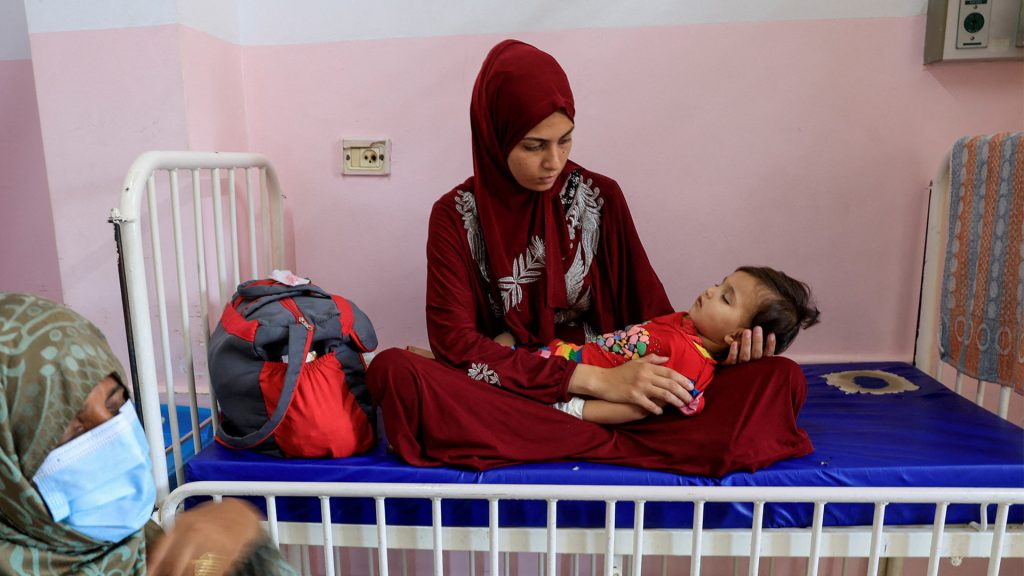
NewsFeed A 16-month-old Palestinian baby is among a growing number of children in Gaza suffering from meningitis, as overcrowding, poor sanitation, and collapsing healthcare caused by Israel’s war on the enclave drive a surge in cases. Published On 7 Jul 20257 Jul 2025 Adblock test (Why?)
Israeli settlers displace Palestinians with “new strategy”

Quotable “There’s a lot more settler violence than we saw a couple of months ago.” Read more Human rights activist Andrey X says that attacks by Israeli settlers in the occupied West Bank are on the rise and that they’ve found a new method to displace Palestinians. Published On 7 Jul 20257 Jul 2025 Adblock test (Why?)
‘We are all Vietnamese and came to Germany to build a better life’
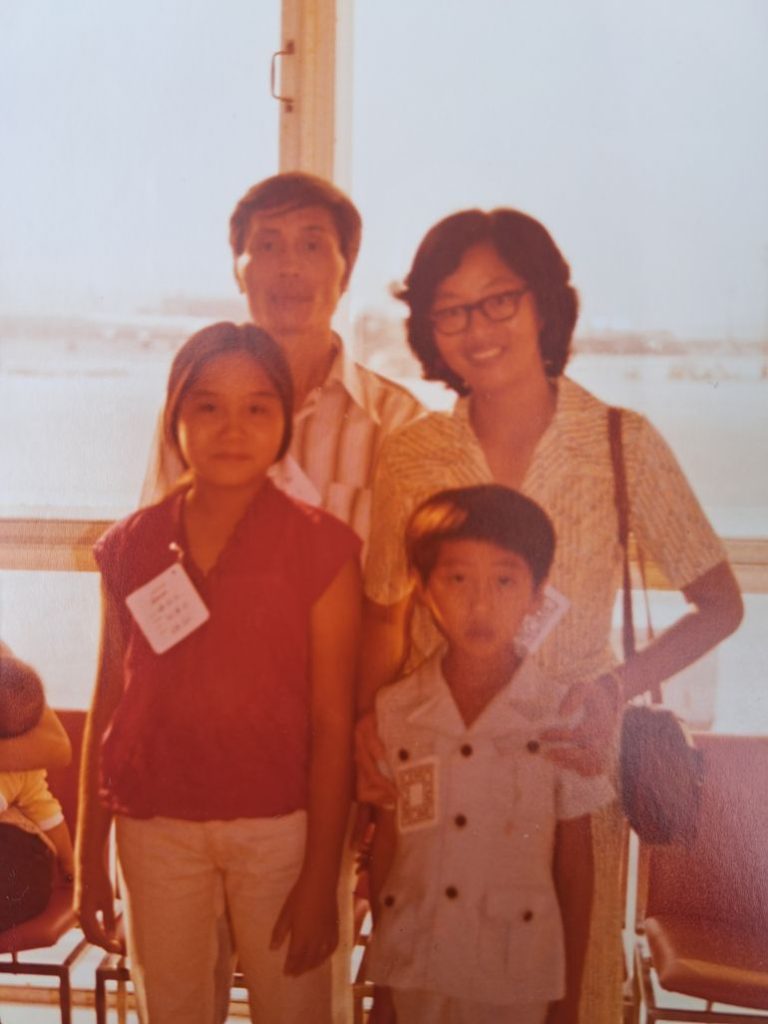
Berlin, Germany – In 1979, Kien Nghi Ha lived in Hanoi with his parents, who worked as electricians at a power plant, and his 12-year-old sister in one bedroom of a shared apartment. They shared the toilet and an outdoor kitchen area along with their neighbours. One of them, an elderly woman, would sometimes look after Ha, then seven years old, and his sister. He remembers the cool, smooth tiled floor offering comfort during the blistering summer heat. He would lie on it listening to the lively street noise and occasional sound of a tram beyond a green steel entrance door. Four years earlier, in 1975, North Vietnamese communist forces had defeated United States-aligned fighters in South Vietnam to take the whole country under a one-party system that remains in power today. Ha was part of an ethnically Chinese mixed Hoa Kieu minority. Communities like his, especially in the early post-war years, felt vulnerable. He remembers how children turned away from him after Vietnam invaded Cambodia, then an ally of China at that time in 1978, because of his heritage. “Some even threw stones at me. This was very shocking, and I didn’t understand at that time what was going on,” he said. Ha, then seven, pictured on the day he arrived with his family to West Berlin in 1979 after a trip via boat and plane [Courtesy: Kien Nghi Ha] The family decided to leave. His parents sold their valuables and embarked on a dangerous and costly trip by boat to Hong Kong. Despite no guarantees of safety, an estimated two million people would ultimately leave this way. Advertisement At that time, those who feared for their future under the new Communist authorities could choose to resettle in one of three countries – West Germany, Australia or the United States. The choice was not available for long. When his uncle left Vietnam just three months later, people were only allowed to migrate to the US. Ha’s parents opted for West Germany as they believed it offered a better work-life balance than the US. The fractures in Vietnam mirrored divisions in Germany, with North Vietnam backed by the USSR-aligned East Germany, officially known as the German Democratic Republic (GDR), and the capitalist West Germany supporting South Vietnam. After arriving in Hong Kong, the family travelled by plane to Frankfurt and then on to Tegel airport in West Berlin, where journalists were waiting, eager to document the country welcoming so-called “boat people”. “I don’t recall much from the arrival, but I do remember many journalists there wanting to take pictures of us,” Ha said. The family were provided an apartment within a social housing complex where thousands of people lived near the Berlin Wall on the west side. His father became a transport worker, while his mother was a cleaner in a children’s nursery. Compared with other social housing at the time, Ha says, the flat was in good condition, with central heating and individual toilets. But the transition was not easy. Ha felt isolated as one of the only children from a minority background in his primary school. A different path Within months of the war’s end, Vietnam signed diplomatic relations with the GDR, paving a different kind of path for Huong Mai to fly overseas a few years later. At 21, she left Hanoi for Moscow and then travelled to Schonefeld airport in East Berlin. She was among the first groups of contract workers and was soon employed at a factory that made drinking glasses. Now aged 64, Mai has a 27-year-old son and runs a textile shop in the town where she has lived since she arrived in the GDR. On April 30, Vietnam marked 50 years since the end of the war. For the large Vietnamese-German diaspora, who arrived as refugees and contract workers, this year’s milestones have stirred a sense of reflection. Mai said she felt joy on the anniversary. “My father resisted against the French colonialists, and then my older brother fought against the Americans. So, for me, the end of this war is very meaningful because of the blood that was shed by my family in all of these wars,” she said. Her brother followed in her footsteps, bringing his family to Germany in 2009. Advertisement His daughter, 26-year-old Dieu Ly Hoang, now lives in Prenzlauer Berg, which is coincidentally the same neighbourhood as Ha. It is a sought-after area of the German capital, formerly in the GDR, now home to cosy cafes, posh restaurants, yoga studios and affluent expatriate families where English is heard on the streets more than German. “It’s been a very important aspect for me to see what my family went through, and how resilient they have been. I know I’m very lucky not to have experienced an evacuation and I can’t imagine what it was like for my grandparents,” Ly said, as she recalled hearing stories about the wartime rations of rice. “I acknowledge the sacrifices they made to migrate for a better life so that I could be born and live in peace,” said Ly, an art historian. Ha, now 53 and a father to two sons, is a postdoctoral researcher in the Asian German diaspora at the University of Tubingen and holds a PhD in cultural studies. Friendly, open and knowledgeable of the complex history he is a part of, Ha also said the commemorative events have felt significant. “There’s an intellectual and cultural discussion going on through which we are trying to make sense of this history and what this history means for us living in the German-Vietnamese diaspora,” he said. “Questions pop up in private and public conversations, articles, books, and artworks. And knowing more about this history will improve our sense of self in German society, because we are able to discover more about a past that we, the younger generations, didn’t experience on a personal level. This allows us to connect the past with the present.” An estimated 35,000 refugees arrived in
Wildfires erupt across Mediterranean as heatwave worsens

Blazes break out in France, Greece, Turkiye and Syria, with several other nations on high alert amid warnings of scorching weather. Countries across the Mediterranean are battling fast-spreading wildfires and soaring temperatures as a heatwave sweeps through Southern Europe and parts of the Middle East, prompting evacuations and emergency alerts. Blazes broke out in Greece, Turkiye, France and Syria on Sunday, with several other nations on high alert as forecasters warned that the scorching weather would intensify in the coming days. From Spain to Italy, authorities urged residents to protect vulnerable people and avoid unnecessary travel during the region’s first severe heatwave of the summer. Emergency teams and ambulances were stationed near popular tourist destinations, while meteorologists warned that extreme heat events – supercharged by climate change – are becoming more frequent and intense. A firefighter walks past a burned house in Pikermi, east of Athens, Greece, July 3, 2025 [George Vitsaras/EPA] In western Turkiye, wildfires erupted on Sunday in Izmir province, fanned by strong winds. Firefighters, supported by aircraft, fought to control the blaze. Local authorities said five neighbourhoods in the Seferihisar district were evacuated as a precaution. Authorities said firefighters have battled more than 600 fires in the drought-hit nation over the past week. Turkish authorities arrested 10 suspects in relation to wildfires that broke out across the country over the past week, Interior Minister Ali Yerlikaya said on Friday. The wildfires killed at least three people in the western coastal province of Izmir. Advertisement Firefighters were still trying to control a blaze in the southern coastal area of Dortyol in Hatay province. Meanwhile, in Greece, more than 160 firefighters, 46 fire trucks and five aircraft were deployed to combat flames in southern Evia. The blaze, which began late on Friday, burned through forested areas and forced two villages to evacuate, officials said. Fires also broke out near Athens. France also saw wildfires break out in the Corbieres region of Aude in the southwest, where temperatures soared above 40C (104F). A campsite and a historic abbey were evacuated. Meteo France placed 84 of the country’s 101 departments under orange-level heat alerts on Monday. A firefighting aircraft flies over a fire engine during efforts to contain a wildfire near Pikermi suburb, east of Athens, Greece, July 3, 2025 [George Vitsaras/EPA] In Spain, the national weather agency AEMET reported temperatures reaching 44C (111F) in parts of Extremadura and Andalusia. “I feel that the heat we’re experiencing is not normal for this time of year,” said Diego Radames, a 32-year-old photographer in Madrid, speaking to the AFP news agency. “Madrid just keeps getting hotter.” Italy placed 21 cities on red alert, including important ones, such as Rome, Milan and Naples. Emergency rooms reported a 10 percent rise in heatstroke cases, according to Mario Guarino of the Italian Society of Emergency Medicine. Portugal also faced extreme conditions, with the capital, Lisbon, under a red warning until Monday night. Two-thirds of the country was on high alert for wildfires and extreme heat. On the island of Sicily, firefighters tackled 15 blazes on Saturday alone. Scientists warn that climate change is intensifying the heat. “Heatwaves in the Mediterranean have become more frequent and more intense in recent years,” Emanuela Piervitali of Italy’s Institute for Environmental Protection and Research told AFP. “We’ll need to adapt to even higher extremes in the future.” Adblock test (Why?)
Akash, India win second cricket Test against England at Edgbaston

Deep took six wickets in the second innings as India levelled their five-match Test series against England 1-1. Akash Deep, filling in for star bowler Jasprit Bumrah, took six wickets as India crushed England by 336 runs to level the cricket series 1-1 after they bowled out the hosts for 271 to claim their first Test victory at Edgbaston. With Bumrah being rested in the second Test, Akash was the unlikely inspiration behind the visitors’ dominant, series-tying win just before tea on the final day of the second Test on Sunday. Akash claimed the first five-wicket haul of his short Test career, removing four of the top five in England’s batting order and then top-scorer Jamie Smith (88) on the way to claiming figures of 6-99. Akash finished with the bowling figures of 10-for-187 for the match. Akash Deep celebrates with India teammates after taking five wickets on the final day of the second Test against England [Alex Davidson/Getty Images] Set a world-record target of 608, England started the final day on 72-3 with a draw its only realistic hope and was all out with about two hours still to play on Sunday as India sealed a first win at Edgbaston in nine attempts. The third Test begins at Lord’s on Thursday. India recovered well after a tough defeat at Headingley last week, when England chased down 371 on day five. Bumrah was left out to preserve his fitness, but Akash was a more-than-able deputy. At age 28, he is a late bloomer – certainly at Test level, where he has played just eight matches since his debut in February last year – but looks the part already with his nagging line and length. He will likely retain his spot for the third Test. Advertisement India captain Shubman Gill was India’s other star in the second Test, making 269 in the first innings and 161 in the second innings in a record-setting performance. Jamie Smith top-scored with 88 runs for England in their second innings run chase [Paul Childs/Action Images via Reuters] Adblock test (Why?)
Israel now faces adversaries that it cannot defeat
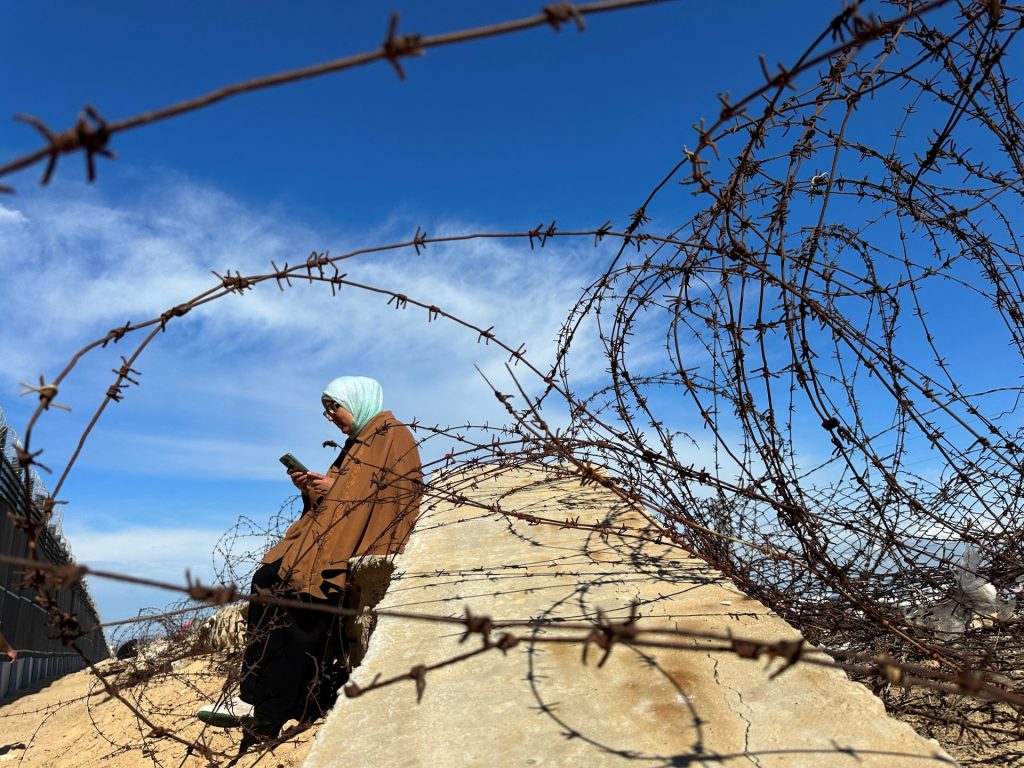
Since October 7, 2023, the war of images has eclipsed the war of weapons. From Gaza’s pulverised hospitals and starving infants to mass graves and desperate fathers digging through rubble, every pixel captured on a smartphone strikes deeper than a missile. These raw, unfiltered, and undeniable images have a far greater impact than any press conference or official speech. And for the first time in its history, Israel cannot delete them or drown them in propaganda. The horrifying images of the Israeli army massacring people at aid distribution locations prompted newspaper Haaretz’s Gideon Levy to write on June 29: “Is Israel perpetrating genocide in Gaza? […] The testimonies and images emerging from Gaza don’t leave room for many questions.” Even staunchly pro-Israel commentator and New York Times columnist Thomas Friedman no longer buys into the Israeli narrative. In a May 9 op-ed, addressed to US President Donald Trump, he declared: “This Israeli government is not our ally,” clarifying that it is “behaving in ways that threaten hard-core US interests in the region”. Once, Israel’s narrative was protected by the gates of editorial rooms and the gravity of Western guilt. But the smartphone shattered those gates. What we see now is no longer what Israel tells us — it’s what Gaza shows us. The platforms carrying these images — TikTok, WhatsApp, Instagram, X — don’t prioritise context; they prioritise virality. While older generations might look away, younger ones are glued to the stream of suffering, absorbed by every pixel, every siren, every moment of destruction. The global public is agitated, and this works against the Israeli interest. Israel is no longer just at war with its neighbours; it is at war with the lens itself. Advertisement The psychological toll of this visual war is reverberating deep inside Israeli society. For decades, Israelis were conditioned to see themselves as global narrators of trauma, not subjects of international scrutiny. But now, with videos of Israeli bombardment, flattened Gaza neighbourhoods, and emaciated children flooding every platform, many Israelis are grappling with a growing ethical predicament. There is unease, even among centrists, that these visceral images are eroding Israel’s moral high ground. For the first time, public discourse in Israeli society includes fear of the mirror: what the world now sees and what Israelis are forced to confront. Internationally, the effect has been even more destabilising for Israel’s diplomatic standing. Longstanding allies, once unconditionally supportive, now face growing domestic pressure from citizens who are not consuming official statements but TikTok’s live streams and Instagram’s image feed. Lawmakers in Europe and North America are openly questioning arms shipments, trade deals, and diplomatic cover, not because of the briefings they have on Israeli war crimes but because their inboxes are flooded with screenshots of scattered body parts and starving children. The battlefield has expanded into parliaments, campuses, city councils, and editorial rooms. This is the backlash of a war Israel cannot win with brute force. To regain control of the narrative, Israeli officials have pressured social media platforms to curb content they dislike. Yet even Israel’s most sophisticated public diplomacy efforts are struggling to keep pace with the virality of raw documentation. Behind closed doors, the Israeli military is no longer merely worried about public relations; it is concerned about prosecution. The Israeli army has admonished soldiers for taking selfies and filming themselves demolishing Palestinian homes, warning that such material is now being harvested as evidence by international human rights organisations. Footage and images from social media have already been used by activists to target Israeli servicemen abroad. In a number of cases, Israeli citizens have had to flee countries they were visiting due to war crimes complaints filed against them. In the age of smartphones, the occupation is no longer just visible — it’s indictable. In the past, Israel fought wars that it could explain. Now, it fights a battle it can only react to — often too belatedly and too clumsily. The smartphone captures what the missile conceals. Social media disseminates information that official briefings attempt to suppress. The haunting images, digitally preserved, ensure that we never forget any devastating atrocity, or act of brutality. Advertisement Images of conflict do not just convey information; they can also redefine our perceptions and influence our political positions. The powerful “Napalm Girl” photo that captured the aftermath of an attack by the US-allied South Vietnamese army on civilians during the Vietnam War had a profound impact on American society. It helped create a significant shift in public opinion regarding the war, accelerating the decision of the US government to end it. Today, in Gaza, the stream of powerful images does not stop. Despite Israel’s best efforts, the global opinion is overwhelmingly against its genocidal war. Smartphones have completely changed the nature of conflict by putting a camera in the hands of every witness. In this new era, Israel struggles to defeat the relentless, unfiltered visual record of its crimes that calls for justice. The views expressed in this article are the author’s own and do not necessarily reflect Al Jazeera’s editorial stance. Adblock test (Why?)
Gunboats target cargo vessel in Red Sea; crew abandons ship
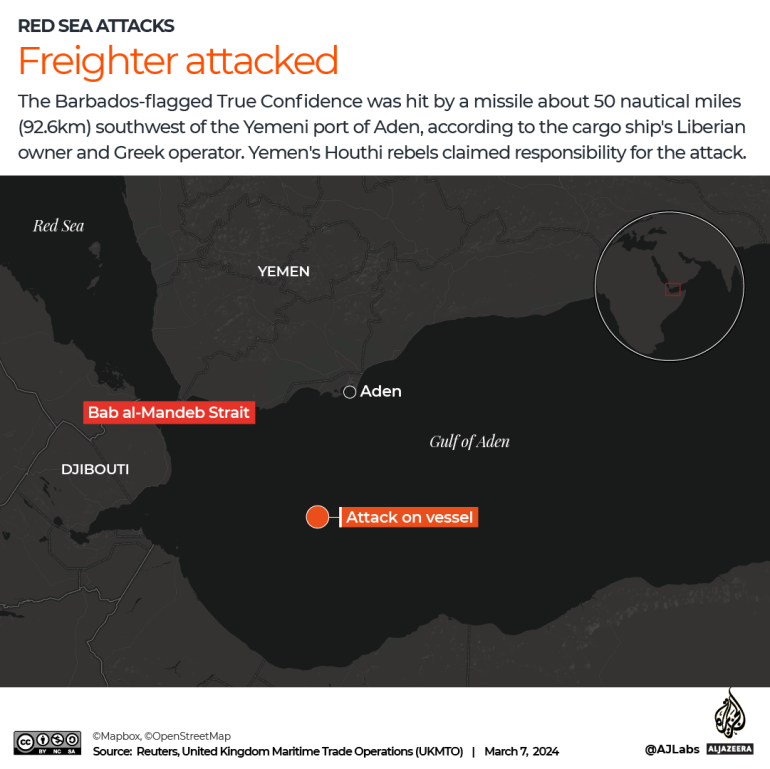
United Kingdom Maritime Trade Operations (UKMTO) reports the vessel is taking on water after being targeted with gunfire and rocket-propelled grenades. A commercial vessel in the Red Sea has come under attack after small boats fired rocket-propelled grenades and automatic weapons towards the ship. According to the organisation United Kingdom Maritime Trade Operations (UKMTO), the incident took place 94km (51 nautical miles) southwest of the Yemeni port of Hodeidah. “The vessel has been engaged by multiple small vessels who have opened fire with small arms and self-propelled grenades. [The] armed security team have returned fire and situation is ongoing,” said UKMTO, which is run by Britain’s Royal Navy. The UKMTO said the attack resulted in a fire onboard and the vessel began taking on water Sunday night as its crew prepared to abandon ship. “Authorities are investigating,” it said, adding later the ship was ablaze after being “struck by unknown projectiles”. “UKMTO has had confirmation from the Company Security Officer that the vessel is taking on water and crew are preparing to abandon ship,” a statement said. Maritime security sources added that the vessel was identified as the Liberian-flagged, Greek-owned bulk carrier Magic Seas. British maritime security firm Ambrey said in an advisory that the ship was attacked by four unmanned surface vehicles [USVs]. “Two of the USVs impacted the port side of the vessel, damaging the vessel’s cargo,” Ambrey added. While no one has claimed responsibility, Ambrey said the attack matched the “established Houthi target profile”. The Yemen-based armed group the Houthis began targeting vessels in the Red Sea shortly after Israel’s war on Gaza began in October 2023, which the Houthis say is in defence of the Palestinians living in the besieged enclave. Advertisement Since November 2023, the Houthis have launched more than 100 attacks targeting commercial vessels, disrupting global shipping and forcing firms to reroute. Their campaign has expanded to include vessels linked to the United States and the United Kingdom since the two countries initiated military strikes in January 2024. In May, the Houthis and the US agreed on a ceasefire that would see the end of attacks on US ships. But the Houthis vowed to continue to target Israeli-linked vessels. A renewed Houthi campaign against shipping could again draw in US and Western forces to the area. This comes at a sensitive moment in the Middle East as a possible ceasefire in the war on Gaza hangs in the balance, and as Iran weighs whether to restart negotiations over its nuclear programme following US air strikes targeting its most sensitive atomic sites. Adblock test (Why?)
Elon Musk launches the America Party as feud with Trump escalates
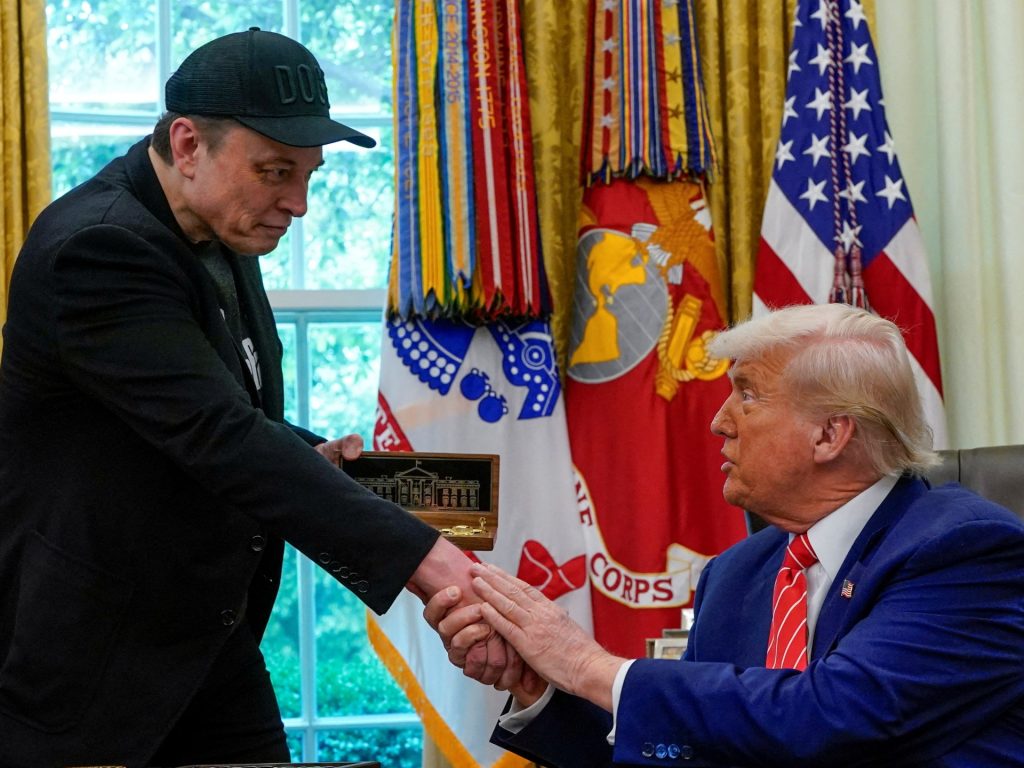
Tesla CEO says he has formed a new political party after falling out with US President Donald Trump over the ‘One Big Beautiful Bill’. Billionaire Elon Musk has followed through on his pledge to create a new political party in the United States after President Donald Trump signed his controversial budget legislation, the so-called “One Big, Beautiful Bill”, into law. Musk in a post on X on Saturday declared the formation of the “America Party“, to “give back” the people of the US their freedom and challenge what he called the nation’s “one-party system”. He cited a poll, uploaded on Friday – the US’s Independence Day – in which he asked whether respondents “want independence from the two-party (some would say uniparty) system” that has dominated US politics for some two centuries. The yes-or-no survey earned more than 1.2 million responses. “By a factor of 2 to 1, you want a new political party and you shall have it!” Musk wrote on Saturday. “When it comes to bankrupting our country with waste & graft, we live in a one-party system, not a democracy. Today, the America Party is formed to give you back your freedom,” he declared. The move comes amid a worsening of the feud between the world’s richest man and Trump over the new budget law, which the Tesla and SpaceX CEO said would bankrupt the US. Musk was Trump’s main campaign financier during the 2024 election, and led the Department of Government Efficiency from the start of the president’s second term, aimed at slashing government spending. The two have since fallen out spectacularly over disagreements about the “Big, Beautiful Bill”. Musk said previously that he would start a new political party and spend money to unseat lawmakers who supported the bill, which experts say will pile an extra $3.4 trillion over a decade onto the US deficit. Advertisement “They will lose their primary next year if it is the last thing I do on this Earth,” Musk had said. There was no immediate comment from Trump or the White House on Musk’s announcement. Trump earlier this week threatened to cut off the billions of dollars in subsidies that Musk’s companies receive from the federal government, and to deport the South African-born tycoon. “We’ll have to take a look,” the president told reporters when asked if he would consider deporting Musk, who has held US citizenship since 2002. It is not clear how much impact the new party will have on the 2026 mid-term elections, or on the presidential vote two years after that. On Friday, after posting the poll, Musk laid out a possible political battle plan to pick off vulnerable House of Representatives and Senate seats, and for the party to become “the deciding vote” on key legislation. “One way to execute on this would be to laser-focus on just 2 or 3 Senate seats and 8 to 10 House districts,” Musk posted on X. All 435 US House seats are up for grabs every two years, while about one-third of the Senate’s 100 members, who serve six-year terms, are elected every two years. Despite Musk’s deep pockets, breaking the Republican-Democratic duopoly is a tall order, given that it has dominated US political life for more than 160 years, while Trump’s approval ratings in polls in his second term have generally held firm above 40 percent, despite the president’s often divisive policies. Adblock test (Why?)
Scepticism and hope for end to Gaza war before Trump-Netanyahu meeting

Israeli Prime Minister Benjamin Netanyahu is visiting the United States on Monday, a visit analysts expect will focus on celebrating Israel and the US’s self-anointed victory against Iran and discussing a proposal for a ceasefire in Israel’s war on Gaza. This is the third time this year Netanyahu will be meeting US President Donald Trump, who claims the US and Israel “obliterated” Iran’s nuclear programme during a 12-day war and that he would resume bombing Iran if it restarts nuclear activities. Last week, Trump said Israel had agreed to conditions for a 60-day ceasefire in Gaza, which would allow all parties to work towards an end to Israel’s 21-month-long war on the besieged enclave. On July 4, Hamas gave a “positive” response to Qatari and Egyptian mediators about the latest ceasefire proposal. Is a ceasefire realistic? On Friday, after Hamas’s response to the proposal, Trump said there could be a “deal next week” and promised to be “very firm” with Netanyahu to ensure a ceasefire. Israel has since said that Hamas has requested changes to the proposal that it found “unacceptable”, but that Israeli negotiators would be going to Qatar on Sunday to discuss the proposal. According to a leaked copy of the deal obtained by Al Jazeera, the ceasefire entails a 60-day pause in hostilities and a phased release of some of the 58 Israeli captives held in Gaza since a Hamas-led attack on Israel on October 7, 2023. Israel’s war on Gaza has killed at least 57,000 people, mostly women and children, in what United Nations experts, legal scholars and human rights groups describe as a genocide against Palestinians. Advertisement Many experts told Al Jazeera that they are not optimistic a temporary ceasefire will lead to a permanent end to the war. “The way [the ceasefire talks] are being framed leaves me sceptical,” said Omar Rahman, an expert on Israel-Palestine with the Middle East Council for Global Affairs. Rahman added that he believes Trump was focused on getting the Israeli captives released, but not on ending the war and the suffering of the people of Gaza. Trump previously promised an end to the war after pushing for a ceasefire just days before he became president in January. However, two months later, Trump did nothing when Israel unilaterally resumed its attacks on Gaza, killing thousands more people. Mairav Zonszein, an expert on Israel-Palestine for the International Crisis Group, said that could happen again. Relatives of Palestinians killed in the Israeli attack on Khan Younis receive the bodies from Nasser Hospital for funerals, in Gaza City, July 4, 2025 [Abdallah F.s. Alattar/Anadolu Agency] “It all rests on Trump and the US to sustain real pressure [on Netanyahu], but that is highly doubtful,” she told Al Jazeera. “I’m optimistic there could be some kind of ceasefire, but longevity and the terms are highly questionable,” Zonszein said. “It’s also possible we could see a ceasefire that does not last because … Israel still every so often just bombs something without repercussions [in Gaza],” she added. Yaser al-Banna, a Palestinian journalist in Gaza, said many in the Strip are divided over whether a ceasefire will end the war. While everyone prays it will, some people cannot imagine Netanyahu sticking to a deal. Netanyahu insists that the war will not end without a “total victory” over Hamas, a concept he has not defined. “About half the people in Gaza are very pessimistic… The other half believes this time could be different due to shared interests among Israel, the Palestinians, Arab states and the US to end this war,” he said. Glory and pragmatism Many analysts believe that Trump is driven by his desire to strike grandiose deals in order to boast about his achievements in global affairs. On Monday, he is likely to take credit for ostensibly dismantling Iran’s nuclear programme – even though that may not be true – and express his desire to retrieve the rest of the Israeli captives in Gaza. He also wants to get the “Gaza issue” out of the way to pursue more normalisation deals between Israel and neighbouring Arab states, said Khaled Elgindy, an expert on Israel-Palestine and a professor of Arab Studies at Georgetown University in Washington, DC. Advertisement “Trump wants to be able to say that he got back the Israeli hostages… and got a Palestinian state… Then he can call himself master of the universe, but getting those things is much harder than he thinks,” Elgindy told Al Jazeera. It’s unclear whether Netanyahu’s political calculations align with Trump’s ambitions. Israel’s next parliamentary elections have to take place before October 2026, and Netanyahu could go to the polls sooner, riding on a likely wave of popularity if he succeeds in returning the remaining captives. Like Trump, he would also tout what he terms a stunning victory against Iran to the Israeli public. Those considerations are important because it is likely that Netanyahu’s frail far-right coalition, held together by pressure to prolong the war on Gaza, would collapse if a permanent ceasefire is reached, said Hugh Lovatt, an expert on Israel-Palestine with the European Council on Foreign Relations. Israeli Prime Minister Benjamin Netanyahu attends his trial on corruption charges at the district court in Tel Aviv, Israel, March 12, 2025 [ Yair Sagi/ Reuters] “At the end of [the possible] 60-day ceasefire, [Netanyahu] could go to elections by committing to a full end to the war and collapse his coalition; or he could go back to war to keep his [far-right] coalition together should he judge the time not right for elections,” he told Al Jazeera. A possible, nearly unfathomable, outcome Staying in office is particularly important for Israel’s longest-serving prime minister, who faces several domestic legal charges of fraud and bribery. During his much-anticipated meeting with Trump, experts expect them to discuss Netanyahu’s trial, which many believe plays a large role in dictating his political calculations. Netanyahu’s position as prime minister has enabled him to undermine the Israeli judicial system by appointing loyalists to

